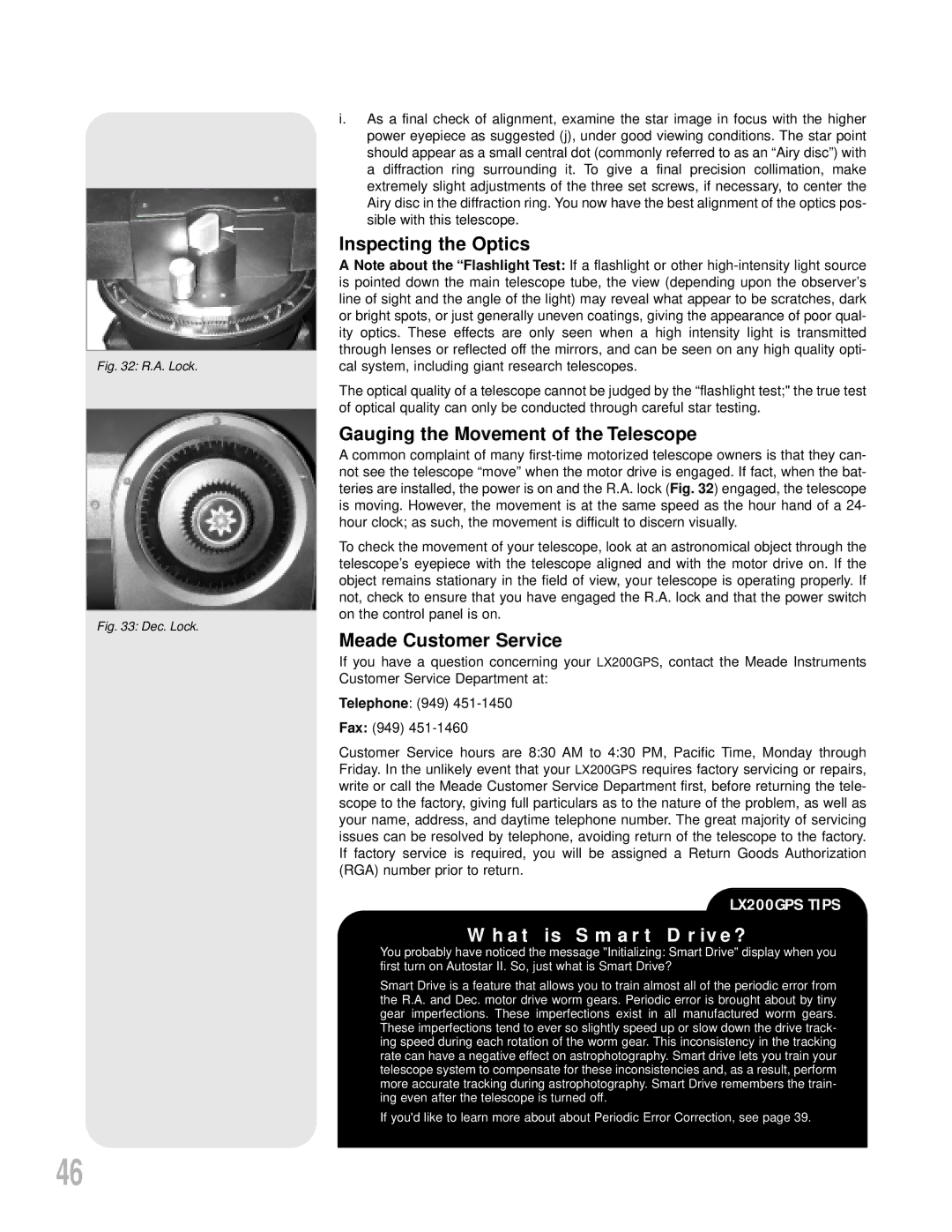
Fig. 32: R.A. Lock.
Fig. 33: Dec. Lock.
i.As a final check of alignment, examine the star image in focus with the higher power eyepiece as suggested (j), under good viewing conditions. The star point should appear as a small central dot (commonly referred to as an “Airy disc”) with a diffraction ring surrounding it. To give a final precision collimation, make extremely slight adjustments of the three set screws, if necessary, to center the Airy disc in the diffraction ring. You now have the best alignment of the optics pos- sible with this telescope.
Inspecting the Optics
A Note about the “Flashlight Test: If a flashlight or other
The optical quality of a telescope cannot be judged by the “flashlight test;" the true test of optical quality can only be conducted through careful star testing.
Gauging the Movement of the Telescope
A common complaint of many
To check the movement of your telescope, look at an astronomical object through the telescope’s eyepiece with the telescope aligned and with the motor drive on. If the object remains stationary in the field of view, your telescope is operating properly. If not, check to ensure that you have engaged the R.A. lock and that the power switch on the control panel is on.
Meade Customer Service
If you have a question concerning your LX200GPS, contact the Meade Instruments Customer Service Department at:
Telephone: (949)
Fax: (949)
Customer Service hours are 8:30 AM to 4:30 PM, Pacific Time, Monday through Friday. In the unlikely event that your LX200GPS requires factory servicing or repairs, write or call the Meade Customer Service Department first, before returning the tele- scope to the factory, giving full particulars as to the nature of the problem, as well as your name, address, and daytime telephone number. The great majority of servicing issues can be resolved by telephone, avoiding return of the telescope to the factory. If factory service is required, you will be assigned a Return Goods Authorization (RGA) number prior to return.
LX200GPS TIPS
What is Smart Drive?
You probably have noticed the message "Initializing: Smart Drive" display when you first turn on Autostar II. So, just what is Smart Drive?
Smart Drive is a feature that allows you to train almost all of the periodic error from the R.A. and Dec. motor drive worm gears. Periodic error is brought about by tiny gear imperfections. These imperfections exist in all manufactured worm gears. These imperfections tend to ever so slightly speed up or slow down the drive track- ing speed during each rotation of the worm gear. This inconsistency in the tracking rate can have a negative effect on astrophotography. Smart drive lets you train your telescope system to compensate for these inconsistencies and, as a result, perform more accurate tracking during astrophotography. Smart Drive remembers the train- ing even after the telescope is turned off.
If you'd like to learn more about about Periodic Error Correction, see page 39.
46
